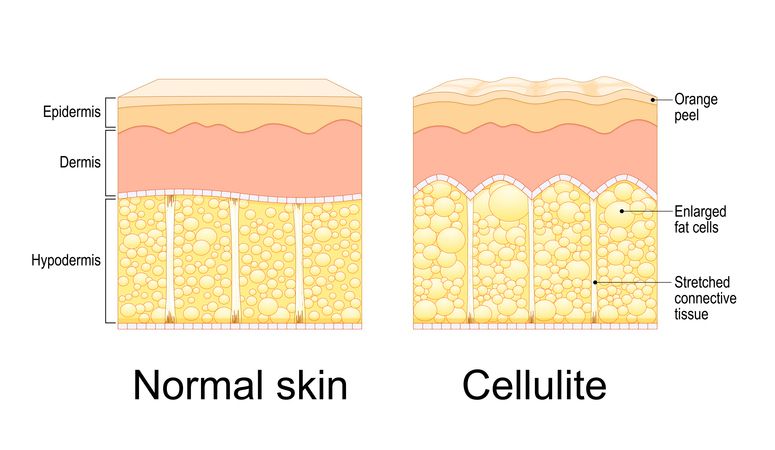
Author: Natalie Ng|Updated: 15 May 2025
You’ll love adding these low calorie fruits to your weight loss meal plan. Watermelon keeps you refreshed, strawberries bring a boost of vitamin C, and cantaloupe is light but full of nutrients. Peaches, blackberries, grapefruit, and plums are all simple, tasty options that fit easily into a healthy diet. Beyond being low in calories, these fruits offer a mix of essential vitamins, fiber, and antioxidants that support overall health. They’re great for digestion, skin health, blood sugar balance, and even your heart. Including different fruits in your daily diet is one of the easiest ways to get more beneficial nutrients without overcomplicating things. Keep reading to see how these everyday fruits can help you lose weight, feel better, and enjoy what you eat.

Benefits of Adding Low Calorie Fruits to a Weight Loss Meal Plan

Eating fruit daily is a simple way to support weight loss without feeling restricted. Low calorie fruits offer more than just a sweet bite—they’re packed with beneficial nutrients that support your overall health while helping you stay within your calorie goals.
Individuals with certain health conditions, such as diabetes and heart disease, should consult with a healthcare professional before making dietary changes.
Fewer calories, more nutrients
Fruits like watermelon, strawberries, grapefruit, and cantaloupe are rich in essential vitamins, including vitamin C and vitamin A, while staying low in calories. Not all fruits are created equal, with some offering higher levels of antioxidants and fiber, making them superior choices for optimal health benefits. This means you can eat a generous serving without increasing your daily calorie intake too much. These nutrients also support your immune system, skin health, and energy levels, which are important when you’re trying to lose weight and maintain optimal health.
Natural fiber supports fullness and digestion
Many low calorie fruits are high in fiber. Fiber-rich fruits like papayas can help prevent constipation. This includes options like blackberries, apples, and plums. Fiber slows digestion, supports gut health, and helps regulate blood sugar levels. This can prevent sudden hunger and reduce cravings, especially between meals. A fiber-rich diet is also linked to a lower risk of heart disease and certain cancers, according to findings in the Nutrition Journal and Critical Reviews in Food Science.
Sweet taste without added sugar
Fruits give you natural sweetness without the high calorie load of processed snacks or desserts. This helps reduce the urge for high-sugar foods that can cause blood sugar spikes and increase fat storage over time. Choosing fruits like peaches, plums, or orange segments instead of sweets can make it easier to stick to a healthy diet in the long term. Additionally, the health benefits of choosing fruits over high-sugar foods include reducing sugar cravings and supporting overall health.
Hydration and heart health support
Fruits like watermelon, grapefruit, and honeydew melon are high in water content. Staying hydrated supports digestion, helps regulate blood pressure, and may reduce the risk of cardiovascular disease. These fruits also contain potassium and antioxidants that are beneficial for heart function and circulation.
Including a variety of low calorie fruits in your daily diet isn’t just helpful for weight loss—it also supports bone health, eye health, and reduces inflammation, which benefits your overall wellness. Additionally, incorporating different fruits into your daily diet can boost immunity, reduce inflammation, and prevent chronic diseases, promoting overall wellness.

Watermelon For Weight Loss: A Refreshing, Low Calorie Choice
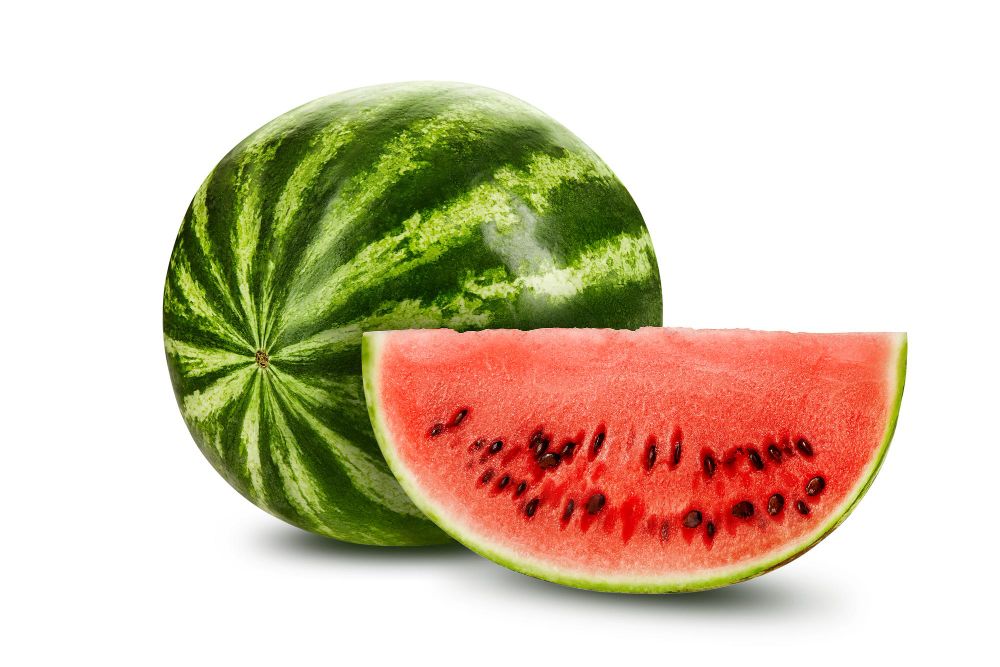
Helps you stay full without adding much to your daily calories
Watermelon is one of the most hydrating low calorie fruits you can add to your daily diet. A one-cup serving has just 46 calories, making it an easy choice if you want something sweet without going overboard. It’s also made up of about 92% water, which helps keep you full and refreshed.
Packed with nutrients that support overall health
This fruit offers more than hydration. It’s a good source of many nutrients, including vitamin C, beta carotene, and other beneficial nutrients that support your immune system, improve skin health, and contribute to cardiovascular health. Its natural antioxidants may also help reduce inflammation and support a lower risk of chronic diseases.
Simple to add to everyday meals
You can enjoy watermelon as a quick snack, blend it into smoothies, or freeze cubes to use in place of ice. It also pairs well with citrus fruits and a pinch of salt. Its naturally sweet taste makes it easy to eat fruit more often without turning to high calorie options.
Adding watermelon to your routine helps you stay on track with a healthy diet and weight loss goals, while still getting essential vitamins and hydration.
Read More
Book Now to Experience
S6 Body Sculpting Treatment
1 Minute Self-Registration
Date should not be before minimal date

Strawberries For Weight Loss: A Sweet, Low Calorie Fruit for Your Daily Diet
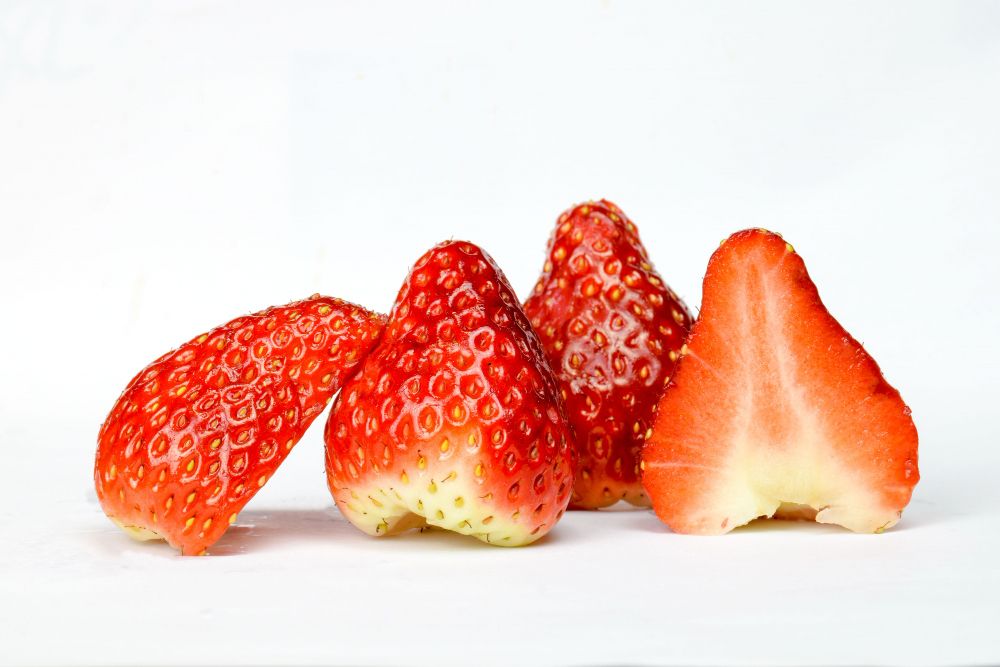
Packed with fiber and vitamin C
Strawberries are one of the easiest low calorie and highly nutritious fruits to enjoy while trying to lose weight. A cup of fresh strawberries has just 49 calories, making them a smart choice when you’re craving something sweet. They also provide about 3 grams of fiber per serving, which helps with digestion and supports a healthy gut. High fiber foods like strawberries help you feel full for longer, making it easier to manage your appetite between meals.
Strawberries are also rich in vitamin C, with one cup giving you nearly your full daily need. Vitamin C supports your immune system, helps with iron absorption, and plays a role in maintaining skin health. For those focused on overall health and weight loss, adding fruits high in vitamin C can be a simple way to get more essential vitamins without increasing your calorie intake.
Easy ways to include strawberries in your meals
You can enjoy strawberries fresh or frozen. Add them to breakfast cereal or oatmeal, mix them into a smoothie, or eat them on their own as a naturally sweet snack. They also go well with plain yogurt or a small handful of nuts if you want something more filling. Using frozen berries works just as well and allows you to enjoy their nutrition benefits all year round.
What to look for when buying
Choose strawberries that are deep red, firm, and fragrant. For the best shelf life, store them in the fridge unwashed and rinse just before eating. This helps keep their texture and flavor intact for up to five days.
Including strawberries in your daily diet is an easy way to enjoy a nutrient-rich, low calorie fruit that supports your weight goals, digestive health, and skin health—all while keeping your snacks satisfying and simple.

Cantaloupe For Weight Loss: A Low Calorie Fruit with Metabolism-Boosting Nutrients
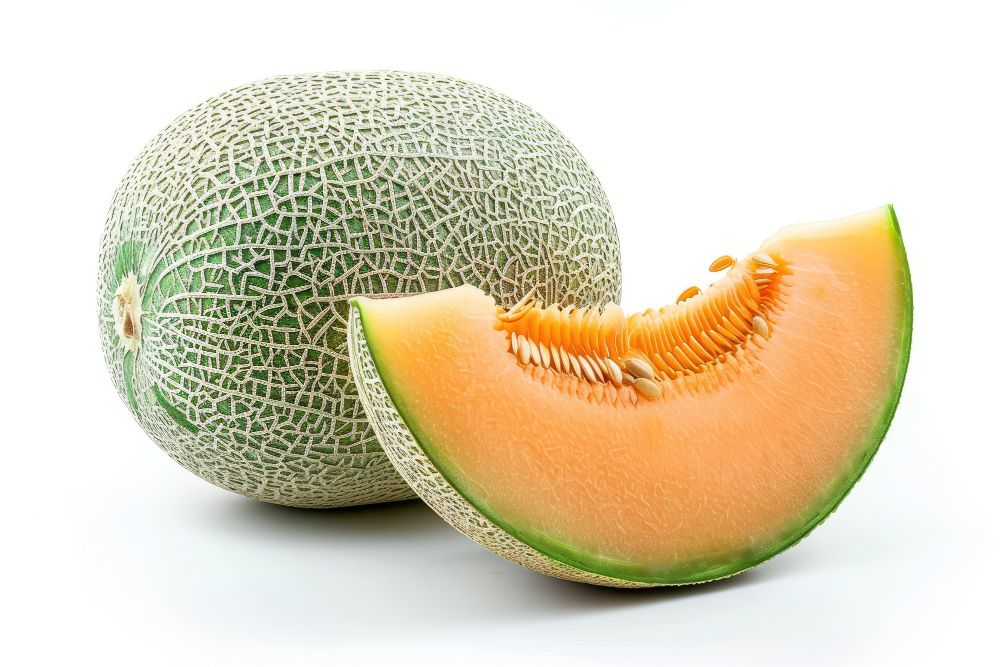
Supports hydration and metabolism
Cantaloupe is a sweet, low calorie fruit that fits easily into a healthy diet. A cup of cubed cantaloupe has about 50 calories, making it a light but filling option for anyone trying to lose weight. Its high water content helps with hydration, which plays a role in appetite control and digestion.
This fruit is also an excellent source of essential vitamins like vitamin C and vitamin A, both of which support immune function and skin health. The bright orange color comes from beta carotene, a compound linked to better eye health and a lower risk of chronic diseases. Including cantaloupe regularly may also support cardiovascular health thanks to its antioxidant properties.
Simple ways to enjoy cantaloupe
You can eat cantaloupe on its own as a refreshing snack, mix it into fruit salads, or blend it into smoothies. It pairs well with citrus fruits or can be added to yogurt for a quick breakfast. Its mild sweetness also makes it a good addition to savory dishes—try wrapping thin slices in lean ham or serving it with cucumber and mint.
Choosing a ripe melon
Pick one that feels heavy for its size and has a soft spot at the stem end. A sweet scent is a good sign that it’s ripe. Once cut, store it in the fridge and eat within three to five days for the best taste and texture.
Cantaloupe is a great way to add more beneficial nutrients to your diet while keeping your calorie intake low. It helps support hydration, healthy skin, and overall wellness without feeling like you're missing out on flavor.
Book Now to Experience
S6 Body Sculpting Treatment
1 Minute Self-Registration
Date should not be before minimal date

Peaches For Weight Loss: A Naturally Sweet, Low Calorie Fruit for Daily Meals
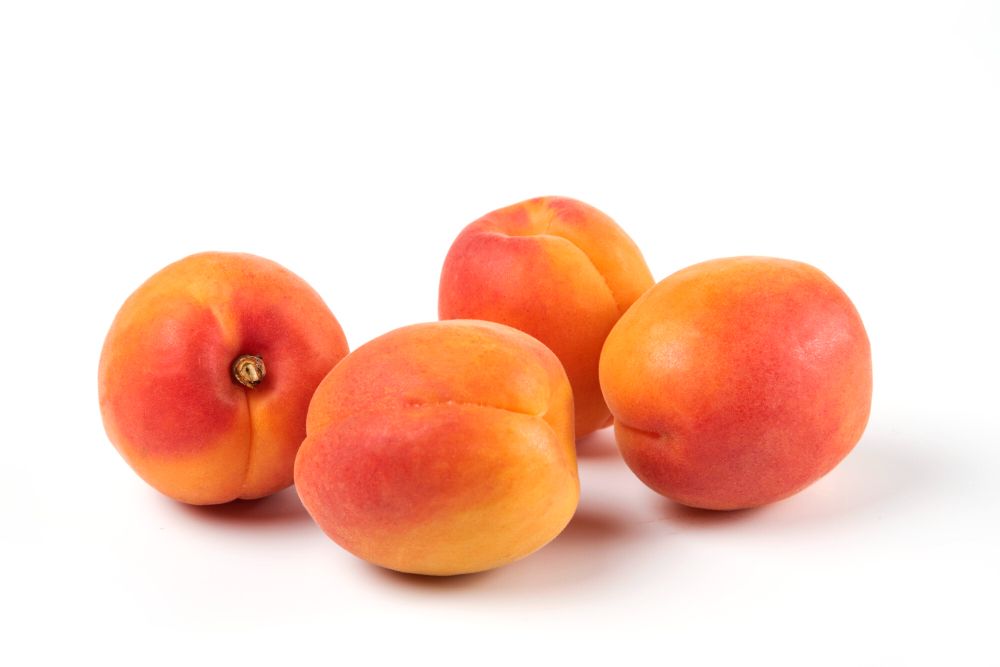
Light on calories, rich in essential nutrients
Peaches are a summer staple that offer both taste and nutrition without adding much to your daily calorie count. One medium peach has about 40 calories, making it an easy fruit to enjoy if you're aiming to lose weight. They contain fiber, which helps support digestion and keeps you full longer. Peaches also provide potassium and vitamin C, which support heart health, improve digestion, and contribute to skin health.
The balance of natural sweetness and hydration makes peaches a great option for those looking to reduce sugar cravings without turning to processed snacks. Their fiber content helps prevent blood sugar spikes, and the mix of vitamins and bioactive compounds supports overall health.
Easy ways to enjoy peaches
Peaches are versatile and work well in both sweet and savory dishes. Slice them into oatmeal, blend into smoothies, or grill them lightly for a warm dessert. They also go well with a handful of nuts or in a fruit salad with other low calorie fruits like strawberries and melon.
How to pick and store peaches
Look for peaches that give slightly when pressed and have a golden-yellow color near the stem. A sweet smell is a good sign of ripeness. Keep them at room temperature until ripe, then store them in the fridge to keep them fresh for up to a week.
Peaches are a simple, satisfying addition to any weight loss meal plan. They help manage sugar cravings, provide essential nutrients, and fit easily into a balanced, healthy diet.

Blackberries for Weight Loss: A Fiber-Rich Fruit That Supports Digestion and Fullness
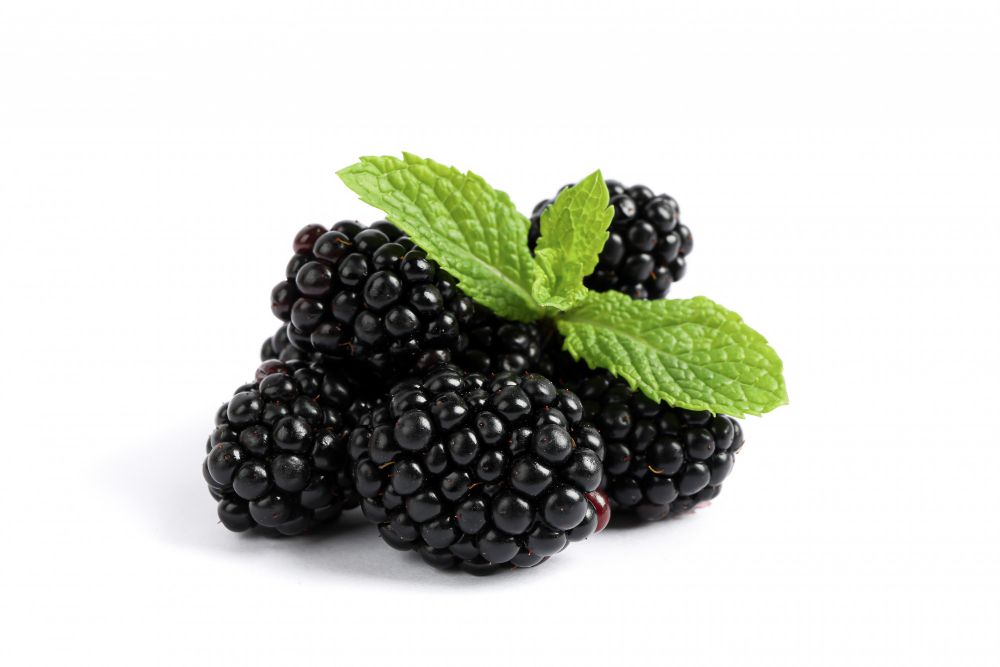
High in fiber, low in calories
Blackberries are a smart addition to any weight loss meal plan. One cup has just 43 calories, but it provides a generous 8 grams of fiber. The fiber in blackberries can help manage cholesterol levels. That’s more than most fruits, making blackberries especially helpful for managing hunger and improving digestion. Fiber slows down how quickly you digest food, helping you feel full longer and making it easier to stick to a healthy diet.
Along with fiber, blackberries offer essential nutrients like vitamin C, vitamin K, and antioxidants that support immune function, skin health, and overall wellness. Their bioactive compounds may also help reduce inflammation and support heart health, all while keeping your calorie intake low.
Simple ways to add blackberries to your diet
You can enjoy blackberries fresh or use frozen berries in smoothies or breakfast bowls. Add them to plain yogurt, sprinkle them over breakfast cereal, or eat them on their own as a naturally sweet snack. Their tart flavor balances well with other fruits like diced papaya or orange segments.
What to know when buying and storing
Fresh blackberries are at their peak during late summer. Choose ones that are firm, dark in color, and not leaking juice. Store them in the fridge and rinse just before eating. You can also freeze them to keep their nutrition benefits year-round.
Blackberries are a rich source of beneficial nutrients that support a healthy weight loss plan, while also being easy to enjoy daily. They’re satisfying, nutrient-dense, and a reliable choice if you’re aiming to lose weight without giving up on flavor.
Book Now to Experience
S6 Body Sculpting Treatment
1 Minute Self-Registration
Date should not be before minimal date

Grapefruit for Weight Loss: Low Calorie Citrus That Supports Hunger Control
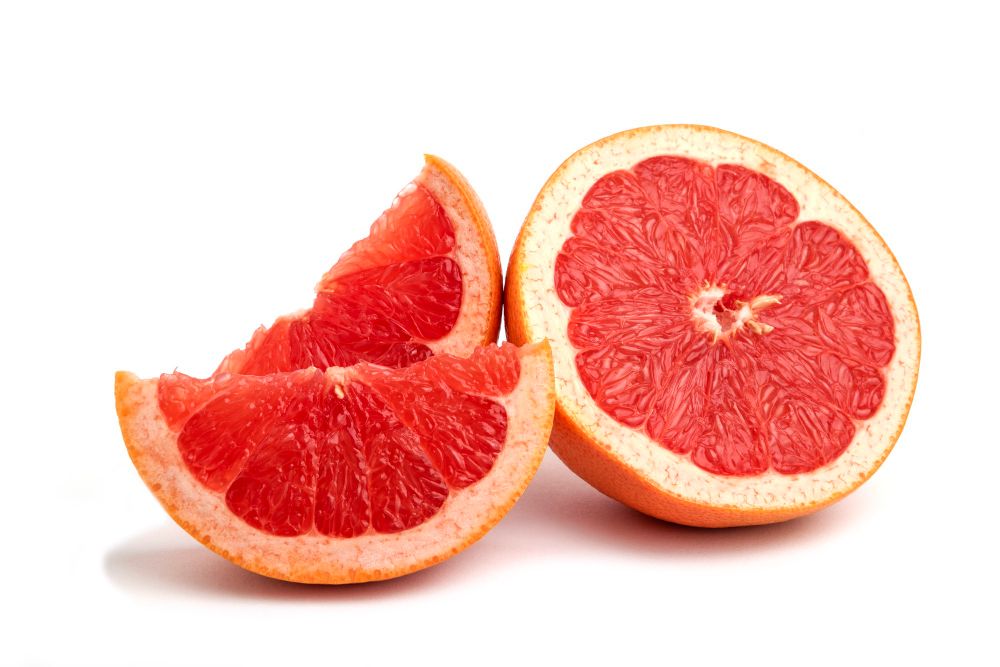
Controls appetite and supports fat reduction
Grapefruit is one of the most effective citrus fruits for weight loss. Half a fruit contains just 42 calories but takes longer to eat, which naturally slows eating pace and increases fullness. Its tart flavor also helps reduce the urge to snack.
It contains naringenin, a bioactive compound linked to better blood sugar balance. This may reduce cravings and support more stable energy levels throughout the day. Grapefruit is also high in vitamin C, which helps support immune function and improves iron absorption.
Easy ways to eat grapefruit
Eat half a grapefruit before meals to curb your appetite. Add segments to salads or plain yogurt for extra flavor. If the taste is too sharp, a pinch of stevia can help without adding calories. Fresh grapefruit is better than grapefruit juice if you want more fiber and better blood sugar control.
Caution for people on certain medications
Grapefruit can interfere with some medications, including those for blood pressure or cholesterol. Always check with your doctor before eating it regularly if you're on prescription drugs.
Grapefruit is a simple, low calorie option for supporting weight loss, controlling cravings, and adding nutrients to your daily diet.

Plums for Weight Loss: A Low Calorie Fruit That Helps Curb Sugar Cravings
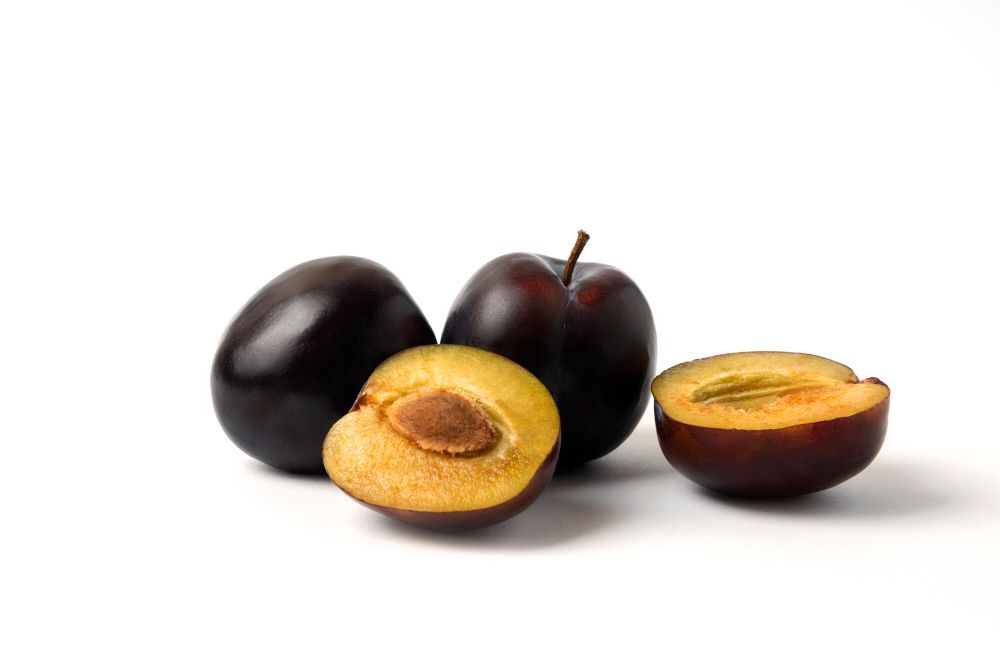
Supports fullness with natural sweetness
Plums are a light, satisfying fruit that fits well into any weight loss meal plan. Plums are beneficial for losing weight due to their low calorie content and fiber. Each plum has only around 30 calories, making it easy to enjoy without affecting your daily calorie goals. They’re naturally sweet, which helps reduce the need for processed snacks or desserts.
Plums also contain fiber, which helps slow digestion and keeps you full between meals. Their antioxidants and phenolic compounds may support cardiovascular health and protect against certain cancers, making them a good choice for both weight control and long-term health.
Simple ways to eat plums daily
Slice them into oatmeal or yogurt, eat them before a workout, or enjoy them as a mid-afternoon snack. Their flavor becomes even sweeter when warmed slightly, so a quick few seconds in the microwave can bring out their natural taste.
How to store and pick fresh plums
Choose plums that feel slightly soft to the touch without being mushy. Store them in the fridge once ripe, and they’ll stay fresh for up to five days.
Plums are an easy, low calorie fruit to include in your daily diet. They support digestion, help curb sugar cravings, and add beneficial nutrients without the extra calories.
Book Now to Experience
S6 Body Sculpting Treatment
1 Minute Self-Registration
Date should not be before minimal date

Easy Ways to Include Low Calorie Fruits in Your Daily Routine
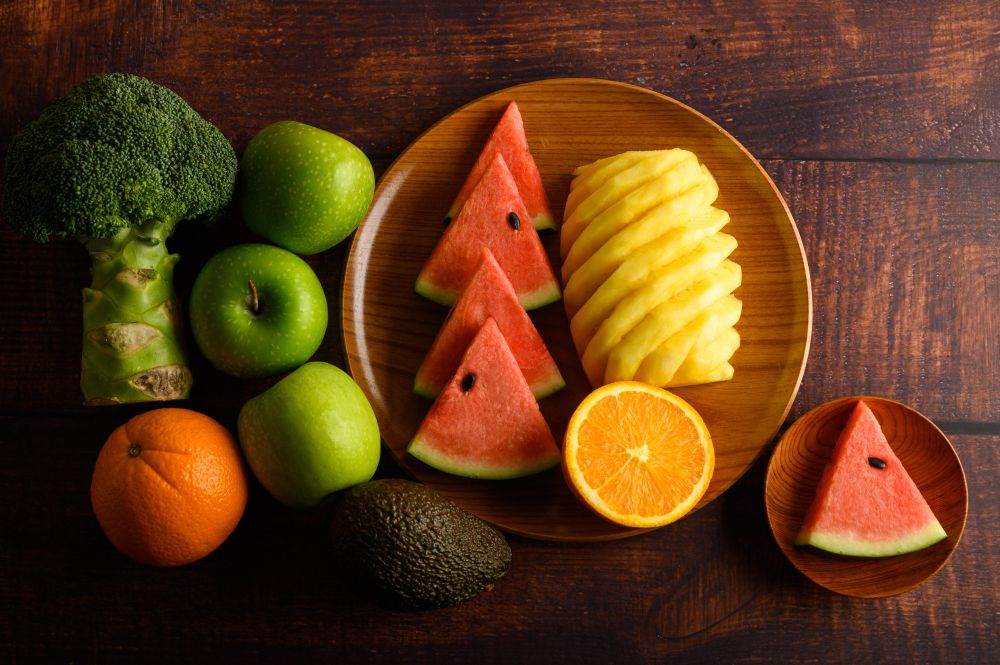
Fitting more low calorie fruits into your meals doesn’t require major changes. A few small adjustments can make a big difference in both nutrition and how satisfied you feel throughout the day.
Keep fruits visible and ready to eat
Washed and pre-cut fruits like strawberries, blackberries, or cantaloupe cubes can be stored in the fridge for quick access. Keeping them in a visible spot—like eye level in the fridge—makes it more likely you’ll reach for them when hunger strikes.
Add fruit to meals you already eat
Sprinkle berries on your morning oatmeal or breakfast cereal. Mix orange segments or diced papaya into a salad. Add sliced peaches or apples to whole grain toast with a little nut butter. These small additions boost flavor, fiber, and volume without adding too many calories. Consuming different fruits daily can improve immunity, reduce inflammation, and lower the risk of chronic diseases.
Use smoothies for convenience
Blend frozen berries, a banana, and a handful of spinach with water or plain yogurt for a quick, balanced snack or light meal. Smoothies are a great way to get multiple fruits in one go, especially when you're short on time.
Make fruit the base for snacks or dessert
Instead of processed desserts, try grilled fruit like peaches or pineapple. Plums or apple slices with a bit of cinnamon make for a warm, naturally sweet option. Fruit with a source of protein—like a few nuts or a spoon of yogurt—can also help stabilize blood sugar and reduce hunger.
Making fruit part of your daily habits helps support weight loss while improving digestion, immune health, and your intake of essential nutrients. The more prepared and accessible your fruit choices are, the easier it is to reach for them throughout the day.

Boost Weight Loss Results with S6 Body Sculpting Treatment
Low calorie fruits support fat loss—S6 helps shape the results
Filling your daily diet with low calorie fruits like watermelon, strawberries, and grapefruit is one of the most effective ways to lose weight naturally. These fruits are rich in essential nutrients, support digestion, and help manage hunger without adding too many calories. However, not all fruits offer the same health benefits; some are more beneficial for weight loss and overall health. But even with healthy eating, it’s common to struggle with fat stored in specific areas—especially around the belly, waist, thighs, and arms.
That’s where the S6 Body Sculpting Treatment can make a difference. While low calorie foods help reduce overall fat, S6 targets stubborn fat that doesn’t respond as easily to diet alone. It works alongside your healthy habits to shape and tone the body more precisely—making your efforts with food even more rewarding.
What is S6 Body Sculpting Treatment?
S6 is a non-invasive, non-surgical body contouring treatment designed to reduce fat in problem areas. It uses a low-energy bio-laser to break down fat cells beneath the skin. This laser energy triggers fat cells to release stored fatty acids, which are then cleared from the body through lymphatic drainage.
A built-in vacuum suction massage follows the laser treatment. This stimulates blood flow, speeds up metabolism, and supports the removal of excess fat. At the same time, the laser stimulates collagen production, which helps improve skin firmness and prevents sagging.
How S6 enhances the results of healthy eating
Eating low calorie fruits helps you reduce your overall fat intake and support your body from the inside. S6 works from the outside by focusing on specific areas where fat tends to stay, even with a clean, balanced diet. This combination helps speed up fat loss, smooth out body contours, and support better results from your weight loss efforts.
S6 is especially helpful for targeting areas that are harder to slim down through food and exercise alone—such as the lower abdomen, thighs, arms, and back. It helps shape the body while supporting healthy skin, circulation, and metabolism.
Key benefits of S6 Body Sculpting Treatment
• Non-surgical and non-invasive
• No needles, medication, or long recovery
• Targets fat in specific areas like the belly, thighs, back, and arms
• Stimulates collagen for firmer, smoother skin
• Works well alongside a healthy, low calorie diet
• Most people return to daily activities right after treatment
If you’re already eating well and want to take your results further, S6 Body Sculpting Treatment can help you reduce stubborn fat and refine your body shape safely and effectively.
Book S6 now to take the next step toward your weight loss goals—no surgery, no downtime, just results.
New Beauty's S6 Body Sculpting TreatmentBook Now to Experience
S6 Body Sculpting Treatment
1 Minute Self-Registration
Date should not be before minimal date
FAQ
Can I eat dried fruit if I'm trying to lose weight?
Dried fruit contains many of the same essential vitamins and beneficial nutrients as fresh fruit, but it’s much more calorie-dense. Water is removed during drying, which means even a small serving can contain a high amount of natural sugar and calories. While dried fruit can be part of a healthy diet, portion control is key. Stick to small amounts, and choose options without added sugar to avoid unwanted weight gain or blood sugar spikes.
Are frozen berries as nutritious as fresh ones?
Yes, frozen berries are a great option, especially when certain fruits are out of season. They’re typically frozen shortly after being picked, which helps lock in essential vitamins and bioactive compounds. They’re also more convenient and affordable, making it easier to include fruit in your daily diet. You can add frozen berries to smoothies, oatmeal, or yogurt for a low calorie and nutrient-rich meal or snack.
How do low calorie fruits affect blood pressure?
Fruits like grapefruit, cantaloupe, and watermelon are naturally rich in potassium, which helps regulate blood pressure by balancing sodium levels in the body. Many fruits also contain antioxidants and anti inflammatory properties that support cardiovascular health. Including a variety of low calorie fruits in your diet can help lower the risk of high blood pressure and related heart conditions over time. Additionally, certain health conditions, such as hypertension, can be managed through dietary choices.
What is the difference between calorie content and nutrition quality in fruits?
Calorie content refers to the amount of energy a fruit provides, while nutrition quality considers the amount of essential nutrients like vitamins, minerals, and fiber per serving. Some fruits may be slightly higher in calories but offer a rich source of vitamins, beta carotene, and apple phytochemicals that support long-term health. Choosing fruits that are low in calories but high in nutrition density is ideal for both weight loss and overall health. Research shows the health benefits of specific fruits, such as their positive impact on heart disease and diabetes.
Can I still lose weight if I don’t diet but use body sculpting treatments like S6?
S6 Body Sculpting Treatment can support targeted fat reduction and improve body shape, but long-term weight loss still depends on your daily diet and lifestyle habits. Treatments like S6 are most effective when combined with healthy choices—such as eating low calorie fruits, staying active, and maintaining a balanced intake of essential nutrients. While you may see visible changes in specific areas, overall weight management still requires consistent, supportive habits.
Recommended Articles
COPYRIGHT© NEW BEAUTY MANAGEMENT LIMITED 2025. ALL RIGHT RESERVED.

